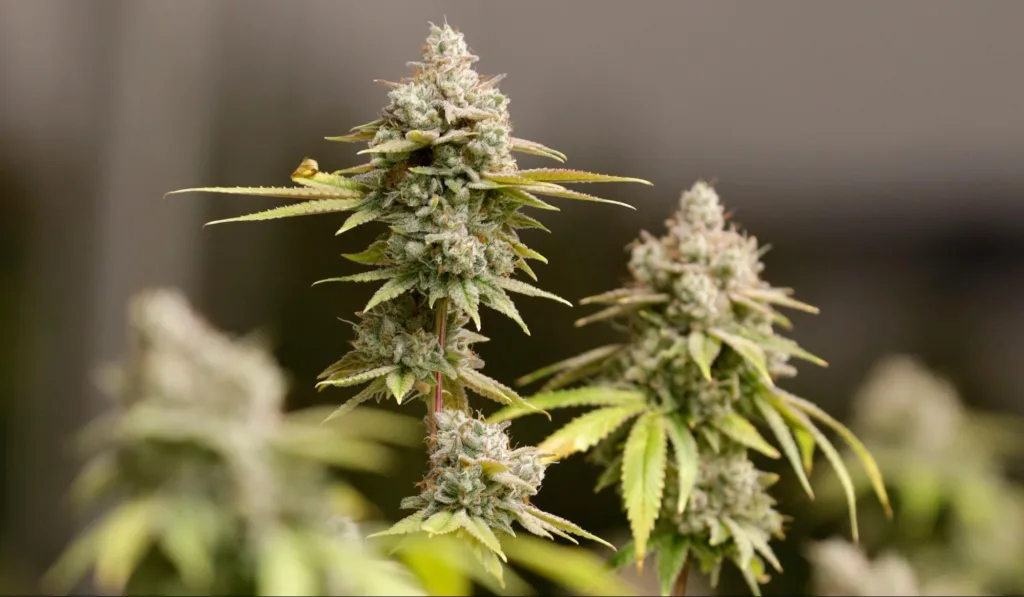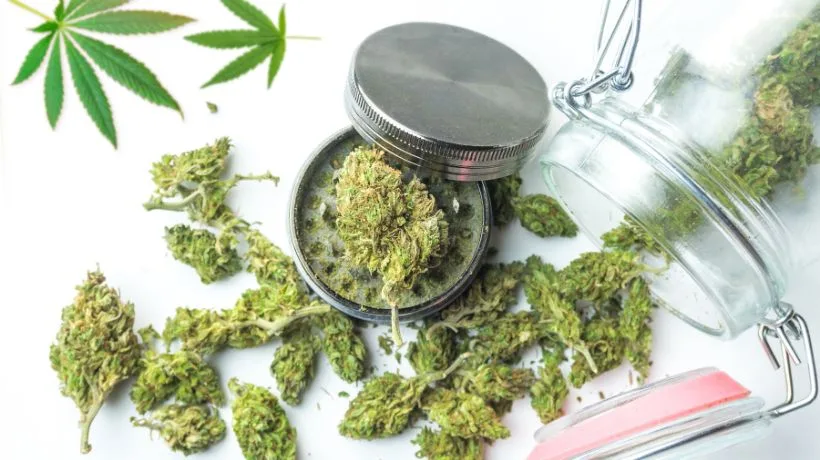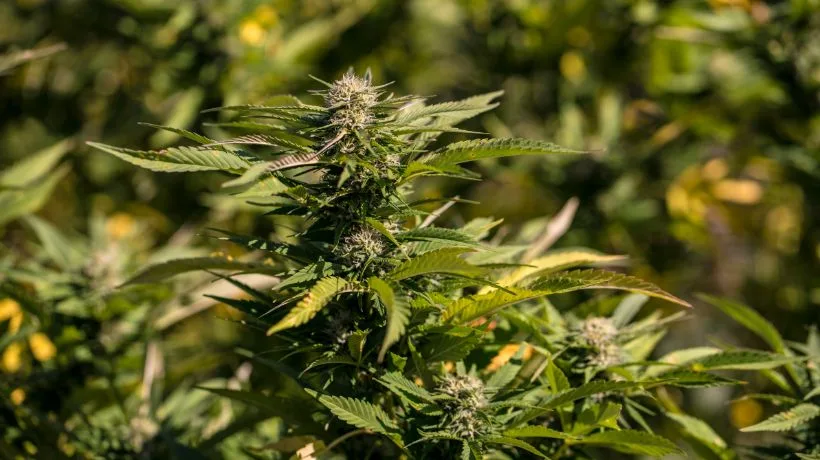Key Takeaways
- Knowing how much cannabis your body can handle and recognizing early signs of overconsumption is essential for avoiding unpleasant experiences.
- The consumption method and THC potency significantly affect the risk of experiencing what feels like an overdose.
- Practicing responsible cannabis use and prioritizing safety, including knowing when to seek medical help, are crucial for a positive experience.
Cannabis is often viewed as harmless, especially when compared to substances like cocaine or heroin. Yet, it’s crucial to acknowledge that while cannabis may not lead to fatal overdoses like opioids, overconsumption is still a risk, potentially leading to intense and uncomfortable side effects.
Both newcomers and experienced users can consume more than planned, but recognizing the signs of excess can help navigate these moments confidently.
Understanding how to prevent overindulgence is key to enjoying cannabis safely. As we explore cannabis use, adopting a cautious and informed approach ensures each experience remains positive and secure.
What Does It Mean to Overdose on Weed?

Overdosing on weed is quite a different ballgame compared to what you might expect with substances like opioids.
When people hear the word “overdose,” there’s often an immediate association with severe, life-threatening consequences. However, in the context of cannabis, the scenario shifts significantly.
An overdose of weed doesn’t mean standing at death’s door. Instead, it involves consuming more cannabis than your body can comfortably handle, leading to a variety of symptoms that, while not fatal, can be pretty unsettling.
This might include feelings of anxiety, confusion, excessive sleepiness, or even temporary paranoia. Essentially, it’s your body’s way of saying, “Hey, that was a bit too much for me!”
Understanding this distinction is crucial. It reminds us that while cannabis is indeed safer in many respects, it still demands respect and responsible use. Knowing your limits and how to stay within them ensures that your experience with cannabis remains enjoyable and, most importantly, safe.
So, while the term “overdose” might sound dramatic, in the world of weed, it’s more about understanding and respecting your boundaries.
Recognizing a Marijuana Overdose
What Are the Signs of a Marijuana Overdose?
Discovering the signs of a marijuana overdose can be crucial in providing the right support and ensuring safety [1]. While the symptoms can vary widely among individuals, recognizing them early can make a significant difference. Here’s a compassionate look at what to watch out for:
Extreme anxiety or panic attacks
- Intense feelings of fear or distress that seem disproportionate to the situation
- Physical symptoms of panic, such as heart palpitations and sweating
Psychotic reactions
- Hallucinations: Seeing, hearing, or feeling things that aren’t there
- Delusions: Strong beliefs in things that are not true or based in reality
- Paranoia: Irrational suspicion or mistrust of others
- Loss of personal identity: Feeling detached from oneself or reality
Decreased judgment, perception, and coordination
- Difficulty making decisions or judging situations correctly
- Altered perception of time, space, and distance
- Clumsiness or trouble with coordination, increasing the risk of accidents
Cardiovascular symptoms
- Fast heart rate or palpitations
- Chest pain, which might signal a heart attack in severe cases
Neurological symptoms
- Uncontrollable shaking or seizures, indicating excessive neurological stimulation
- Pale skin color, a sign of poor circulation or shock
- Unresponsiveness, where the individual does not react to external stimuli
Other significant symptoms for acute marijuana intoxication
- Sudden high blood pressure with a headache, possibly indicating a hypertensive crisis
- Troublesome hallucinations and pronounced confusion contributed to a disorienting experience
- Lethargy, depression, fear, and panic affecting emotional well-being
- Rapid heart rate, postural hypotension (a sudden drop in blood pressure upon standing), and respiratory depression, which can affect breathing
- Nausea and vomiting, which are common physical reactions to overconsumption
Understanding these signs is the first step in responding effectively to a marijuana overdose, prioritizing well-being and safety.
How Can the Consumption Method Affect Your Risk?

The way you choose to consume cannabis can significantly impact your risk of experiencing what feels like an overdose. Let’s navigate through the main methods:
- Smoking
- Vaping
- Edibles
When you smoke or vape cannabis, the THC hits your system almost instantly, making it easier to gauge how much you’ve had and to stop before you go overboard. However, smoking marijuana can still lead to rapid onset of overwhelming effects if you consume high-THC strains or vape concentrates.
On the flip side, edibles are a whole different story. They take longer to kick in, sometimes up to two hours, and this delay often leads to overconsumption. You might think, “This isn’t working; I’ll have a bit more,” only to find yourself in an uncomfortably intense high once it all starts to take effect.
Understanding these differences is key to managing your marijuana use and minimizing your risk of experiencing those not-so-pleasant side effects of having too much.
Why Does Potency Matter?
Potency really is the name of the game when it comes to understanding your weed overdose, especially regarding the risk of feeling like you’ve had too much.
In simple terms, potency refers to the amount of THC (tetrahydrocannabinol) present in your cannabis. THC is the main psychoactive compound that gives cannabis its high, and its concentration can vary greatly among different strains.
Why does this matter? Well, the higher the THC content, the stronger the effects. A strain with a high THC level can lead to a more intense experience with fewer puffs or bites, increasing the likelihood of accidentally consuming too much.
This is particularly important for those new to cannabis or trying out a new strain—they might not be prepared for the powerful effects of a high-THC strain.
In contrast, strains with lower THC levels provide a milder, more manageable experience, which might be preferable for those looking for gentle relief or a more subdued high.
Understanding the potency of the cannabis you’re consuming helps you make informed decisions about how much to use, significantly reducing the risk of experiencing those overwhelming moments.
So, when it comes to cannabis, remembering that potency matters can help ensure your experience is as enjoyable and safe as possible.
Navigating Through the Overdose Experience
Immediate Actions to Take
Finding yourself or someone close to you amid a marijuana overdose can be daunting, but knowing the right steps to take can ease the situation significantly. First and foremost, stay calm and reassured that the feelings will pass—this can be incredibly comforting.
Ensure the person is in a safe, quiet place where they can relax without overwhelming stimuli. Hydration is key, so offer them water to drink, but avoid caffeine or alcohol, which could exacerbate symptoms.
If they feel dizzy or nauseous, have them lie down and breathe deeply. If their symptoms are intensely distressing or if they have concerns about their physical safety, don’t hesitate to seek medical assistance.
Remember, the goal is to reduce anxiety and discomfort until the effects naturally diminish, guiding them gently through the experience with patience and understanding.
When to Seek Medical Help
While most symptoms of a marijuana overdose are manageable at home, there are certain situations where medical help is essential.
Suppose the person experiences severe symptoms such as uncontrollable vomiting, intense hallucinations, severe panic attacks, signs of a heart attack (like chest pain or difficulty breathing), or becomes unresponsive.
In that case, it’s time to call for medical assistance. These signs indicate that the individual’s condition could be more serious (fatal overdose), and professional intervention is necessary to ensure their safety.
Remember, it’s better to err on the side of caution and seek medical help if you’re unsure about the severity of the situation. Quick and decisive action can make all the difference in ensuring well-being and health.
Can You Prevent a Marijuana Overdose?

Preventing a marijuana overdose is all about mindful consumption and understanding your own limits. Start with choosing strains of lower potency to ease into the experience, especially if you’re new to cannabis or exploring a new variety.
Pay close attention to how your body reacts to different THC levels, as this can help you gauge your tolerance. It’s also wise to go slow, particularly with edibles, since their effects take longer to manifest and consuming too much too soon is easy.
Establishing a comfortable setting and being in a relaxed state of mind can also mitigate the risk of negative reactions. And remember, cannabis experiences are personal; what works for one person might not work for another.
Listening to your body and staying informed about what you consume are key steps in ensuring your safety and enjoyment.
The Long-Term Impact of Overdoing It
Regularly consuming more marijuana than your body can handle can lead to longer-term health consequences. While occasional overindulgence might not cause lasting harm, making a habit of it can affect your mental clarity, emotional stability, and even your physical health.
Over time, you might notice a decrease in memory function, difficulty concentrating, or an increase in feelings of anxiety or depression. Physically, persistent drug abuse can impact lung health, especially if smoking is your preferred consumption method.
It’s also worth considering the potential for developing a tolerance, requiring increasingly larger amounts to achieve the same effects, which can spiral into dependency.
Acknowledging these risks is crucial to maintaining a balanced relationship with cannabis, where respect for the substance and awareness of your own limits help safeguard your well-being in the long haul.
Getting Help for Marijuana Misuse
If you’re finding it challenging to manage your marijuana use or suspect you’re facing marijuana addiction, know that help is within reach. Chronic marijuana use can sometimes lead to situations where professional guidance becomes necessary to navigate back to balance and health.
Various resources, from counseling and support groups to treatment programs, are designed specifically to address marijuana addiction, offering both the understanding and the tools needed for recovery.
Seeking help is a sign of strength, and taking that first step toward getting the right support can make all the difference in regaining control and moving forward positively.
Conclusion
In conclusion, the risk of a fatal marijuana overdose is virtually nonexistent, yet the chance of facing overwhelming symptoms from excessive consumption is a reality.
Recognizing overconsumption signs, understanding the impact of different usage methods, and opting for lower potency strains are vital to avoiding discomfort.
Importantly, knowing when to seek medical assistance and practicing responsible use is fundamental to positive cannabis experiences.
As we explore the evolving cannabis landscape, adhering to these principles supports a healthy, informed, and respectful engagement with cannabis.
Sources –
- Marijuana Overdose Symptoms, Signs, & Treatment | DrugAbuse. DrugAbuse.com. Published December 2023. Accessed March 27, 2024. https://drugabuse.com/drugs/marijuana/overdose/

